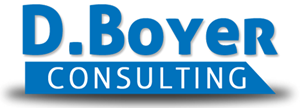Business is mostly conducted via email or phone communications.
Office hours 10:00 a.m. to 6:00 p.m, Mon. - Thurs., and 10:00 a.m. to 2:00 p.m. on Fridays.
SEND EMAIL INQUIRIES DIRECTLY TO:
Dawn.Boyer@me.com
Business is mostly conducted via email or phone communications.
Office hours 10:00 a.m. to 6:00 p.m, Mon. - Thurs., and 10:00 a.m. to 2:00 p.m. on Fridays.
SEND EMAIL INQUIRIES DIRECTLY TO:
Dawn.Boyer@me.com
Business is mostly conducted via email or phone communications.
Office hours 10:00 a.m. to 6:00 p.m, Mon. - Thurs., and 10:00 a.m. to 2:00 p.m. on Fridays.
SEND EMAIL INQUIRIES DIRECTLY TO:
Dawn.Boyer@me.com
Recommendations Up May Get You Positively Noticed
September 25th, 2013 by Dawn Boyer
Recommendations up or laterally may get you positively noticed.
Nothing provides a warm, fuzzy feeling better than a business professional recommendation for my capabilities and work performance. In the last part of the 20th Century, recommendations were normally provided via letterhead, and in many cases it was hard to pin down the ‘boss’ to get the recommendation or referral letter typed up, signed, and delivered. A manila file-folder with letters of references was a vital job search tool – the final ‘star’ piece in an interview conclusion.
In the 21st Century, a hard-copy letter of reference can be too easily forged, copy machines make digital copies that are hard to distinguish from the original, and letterhead paper is easy to get lost in the paper shuffle. What has become valuable with today’s technology is an online recommendation from a source that is easy to track back and communication with directly. Links back to the person who provided the recommendation increases the possibility the references are valid and reliable.
Traditionally, recommendations are written to provide kudos to someone who performed work for or worked under a supervisor. This directs attention to the person for whom the kudos is supplied.
Growing exponentially in the technology-based world is kudos, referrals, and recommendations via social media. Many businesses are learning – and are either delighted with the results or devastated with a poor review – that social media viral-based commentary on products or services can make or break a business.
Referrals posted on Noomi (coaches/mentors), starred ratings on Facebook company pages, or professional recommendations on LinkedIn (personal profiles) enhance the users credibility, and social sharing creates an implied trust. Would you only consider a job candidate who seems very qualified, but has only one recommendation on LinkedIn? Or would you look harder at a job candidate who seems moderately qualified, but has 10 glowing reviews about their work?
Recommendations from others on your social media profiles gain you attention, but the third type of recommendation can also bring you attention. This is the lateral or upward recommendation. You are able to manipulate the recommendation to bring attention back to yourself and potentially obtain more eyes looking at your own job qualifications.
Think back to co-workers, bosses, even your bosses’ boss you have worked with over the last number of years. Which of those people did you appreciate for their hard work or their dedication to the company and their subordinates? Did you learn some amazing lessons from these supervisors? Did any of your co-workers complete grueling projects despite seemingly impossible goals or get work completed while undergoing external (personal) pressure and concerns? Did an employee in the company, charity organization, or trade group you were associated with go beyond the call of duty in their responsibilities?
Now is the time to sit down and go through the listing of those folks you would like to provide kudos or note their unique qualities or achievements. Write the recommendation factually, professionally, and note at least one quality or accomplishment this person achieved and why you feel they deserve it. The trick to pulling the reader’s attention back to yourself as the author is to ensure you have an email, website URL, or LinkedIn profile link at the end of the written recommendation. Use your business or cell number (not your home phone), provide an email you know will be forever (personal), and you can provide a valuable SEO back-link to your own business or professional website. This creates curiosity and may prompt readers to click on the links. Or, they may want to contact you because of the way you wrote the recommendation or because of a key word (company name, job title, geographic location).
This attention-getting trick works in several positive ways. It provides a valuable referral to someone who deserves a ‘pat-on-the-back.’ You may be remembered for your own excellent work performance and may recommend you in return. It often intrigues readers to link back to your professional profile to see your capabilities and experience.
Recruiters often look at those who are connected to passive candidates because they may have worked in the same company or industry and have similar backgrounds and experience to contact for job openings. You portray a team player and are good at providing public thanks and gratitude for a job well done.
Ask for recommendations for your own work from your current or ex-bosses. Do provide recommendations upwards and laterally to promote secondary interest back to yourself. Carefully crafted back-links and permanent contact information will definitely provide a return on the investment of the time spent in writing.
Example:
| John Smith was my supervising manager while I was working at the XYZ Corp. His empathy for subordinate’s work/family life prompted him to schedule flexible weeks, achievable workloads, and energize the team. He often stayed late filling in for those needing to leave early for family events. I remember how he worked with a struggling employee with medical or health issues to ensure their paychecks were not dramatically affected. Mr. Smith was always available for mentoring opportunities and his sense of humor lightened up dreary days. His ‘can-do’ attitude and the ability to provide impromptu training sessions made the work force feel important to the team.Thanks Mr. Smith for your work and ethics!I would be happy to speak with any one seeking a personal recommendation about Mr. Smith’s capabilities and work performance.Respectfully, Mary Jane Hornblower
(###) ###-####; MJHornblower@MyEMailAddress https://MyBusinessWebsite.com |
Dawn Boyer, Ph.D., is the owner of D. Boyer Consulting – providing resume writing, social media management, business development, business plan writing, and human resources consulting. Reach her at: Dawn.Boyer@DBoyerConsulting.com or https://dboyerconsulting.com.
Readers Comments
Recommendations Up May Get You Positively Noticed
September 25th, 2013 by Dawn Boyer
Recommendations up or laterally may get you positively noticed.
Nothing provides a warm, fuzzy feeling better than a business professional recommendation for my capabilities and work performance. In the last part of the 20th Century, recommendations were normally provided via letterhead, and in many cases it was hard to pin down the ‘boss’ to get the recommendation or referral letter typed up, signed, and delivered. A manila file-folder with letters of references was a vital job search tool – the final ‘star’ piece in an interview conclusion.
In the 21st Century, a hard-copy letter of reference can be too easily forged, copy machines make digital copies that are hard to distinguish from the original, and letterhead paper is easy to get lost in the paper shuffle. What has become valuable with today’s technology is an online recommendation from a source that is easy to track back and communication with directly. Links back to the person who provided the recommendation increases the possibility the references are valid and reliable.
Traditionally, recommendations are written to provide kudos to someone who performed work for or worked under a supervisor. This directs attention to the person for whom the kudos is supplied.
Growing exponentially in the technology-based world is kudos, referrals, and recommendations via social media. Many businesses are learning – and are either delighted with the results or devastated with a poor review – that social media viral-based commentary on products or services can make or break a business.
Referrals posted on Noomi (coaches/mentors), starred ratings on Facebook company pages, or professional recommendations on LinkedIn (personal profiles) enhance the users credibility, and social sharing creates an implied trust. Would you only consider a job candidate who seems very qualified, but has only one recommendation on LinkedIn? Or would you look harder at a job candidate who seems moderately qualified, but has 10 glowing reviews about their work?
Recommendations from others on your social media profiles gain you attention, but the third type of recommendation can also bring you attention. This is the lateral or upward recommendation. You are able to manipulate the recommendation to bring attention back to yourself and potentially obtain more eyes looking at your own job qualifications.
Think back to co-workers, bosses, even your bosses’ boss you have worked with over the last number of years. Which of those people did you appreciate for their hard work or their dedication to the company and their subordinates? Did you learn some amazing lessons from these supervisors? Did any of your co-workers complete grueling projects despite seemingly impossible goals or get work completed while undergoing external (personal) pressure and concerns? Did an employee in the company, charity organization, or trade group you were associated with go beyond the call of duty in their responsibilities?
Now is the time to sit down and go through the listing of those folks you would like to provide kudos or note their unique qualities or achievements. Write the recommendation factually, professionally, and note at least one quality or accomplishment this person achieved and why you feel they deserve it. The trick to pulling the reader’s attention back to yourself as the author is to ensure you have an email, website URL, or LinkedIn profile link at the end of the written recommendation. Use your business or cell number (not your home phone), provide an email you know will be forever (personal), and you can provide a valuable SEO back-link to your own business or professional website. This creates curiosity and may prompt readers to click on the links. Or, they may want to contact you because of the way you wrote the recommendation or because of a key word (company name, job title, geographic location).
This attention-getting trick works in several positive ways. It provides a valuable referral to someone who deserves a ‘pat-on-the-back.’ You may be remembered for your own excellent work performance and may recommend you in return. It often intrigues readers to link back to your professional profile to see your capabilities and experience.
Recruiters often look at those who are connected to passive candidates because they may have worked in the same company or industry and have similar backgrounds and experience to contact for job openings. You portray a team player and are good at providing public thanks and gratitude for a job well done.
Ask for recommendations for your own work from your current or ex-bosses. Do provide recommendations upwards and laterally to promote secondary interest back to yourself. Carefully crafted back-links and permanent contact information will definitely provide a return on the investment of the time spent in writing.
Example:
| John Smith was my supervising manager while I was working at the XYZ Corp. His empathy for subordinate’s work/family life prompted him to schedule flexible weeks, achievable workloads, and energize the team. He often stayed late filling in for those needing to leave early for family events. I remember how he worked with a struggling employee with medical or health issues to ensure their paychecks were not dramatically affected. Mr. Smith was always available for mentoring opportunities and his sense of humor lightened up dreary days. His ‘can-do’ attitude and the ability to provide impromptu training sessions made the work force feel important to the team.Thanks Mr. Smith for your work and ethics!I would be happy to speak with any one seeking a personal recommendation about Mr. Smith’s capabilities and work performance.Respectfully, Mary Jane Hornblower
(###) ###-####; MJHornblower@MyEMailAddress https://MyBusinessWebsite.com |
Dawn Boyer, Ph.D., is the owner of D. Boyer Consulting – providing resume writing, social media management, business development, business plan writing, and human resources consulting. Reach her at: Dawn.Boyer@DBoyerConsulting.com or https://dboyerconsulting.com.














